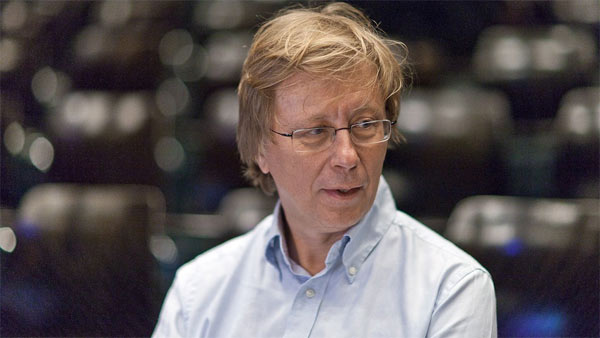 On Tuesday, November 19, 2013, audience members filed into the small Clark Studio Theater at Lincoln Center to listen to JACK Quartet perform Georg Friedrich Haas’ String Quartet No. 3 In iij. Noct. (“in the dark”) as part of the White Light Festival. Packed like sardines, the audience sat in two long rectangular rows with an aisle between them and four empty chairs reserved for the musicians on the outside corners facing the audience. Haas, who recently joined the Columbia University composition faculty, was also in attendance.
On Tuesday, November 19, 2013, audience members filed into the small Clark Studio Theater at Lincoln Center to listen to JACK Quartet perform Georg Friedrich Haas’ String Quartet No. 3 In iij. Noct. (“in the dark”) as part of the White Light Festival. Packed like sardines, the audience sat in two long rectangular rows with an aisle between them and four empty chairs reserved for the musicians on the outside corners facing the audience. Haas, who recently joined the Columbia University composition faculty, was also in attendance.

Before the performance began, audience members were warned that they would be in total darkness for the next hour to hour-and-a-half. There was a short one-minute test where the lights were brought down to show the audience how dark it would be. As I was gently eased into the darkness, my heart rate rose and my body grew heavy. I realized at that moment that I have never before been in such a large, enclosed space completely in the dark.
When the lights came up after the test, a disclaimer was given that if the one minute of darkness made you claustrophobic or unbearably uncomfortable, it was time to leave because they did not want people to exit during the performance. While no one left after this initial warning, one person did leave about a minute into the performance, using their cell phone light to guide them to the door.
Haas’s piece is remarkable. He turns out the lights in order to focus the audience’s attention on the sound world he is presenting. He also purposefully has the players of the string quartet sit as far apart from each other as possible, so that one member faces the audience at each corner of the rectangle. The layout of the players creates a world of perception and sound we are not used to: rarely is the audience placed in the center of where the music is being made. In addition, performing in total darkness requires the musicians to memorize the entire score for the piece, which is longer than an hour.

The quartet begins with col legno ricochets traded back and forth between the instruments, eventually evolving into sections that contain sustained drones, pizzicato, glissando, call and response, other extended techniques, and even a quotation of one of 16th century composer Carlo Gesualdo’s choral Tenebrae pieces. The piece moves through similar sound worlds and tone colors, never evoking a jarring contrast with what comes before. Rather, there seems to be a gradual easing from one section into another.
As the piece continues, there are musical fragments and motives that frequently appear and reappear. These fragments become familiar to us, and they are significant in realizing the form of the work. The way the piece moves forward is through invitations to accept different fragments. Players invite each other by throwing a motive from one section into the performance, and the other players can choose to accept and develop the motive or decline and wait to agree on another section to lead into. Thus, the piece can vary greatly in length and is never the same twice.
After the performance ended, the audience was left sitting in the darkness and the silence for a few minutes more before the lights gradually came up. An hour and ten minutes had passed, but it felt as if no time had passed at all. The temporal experience of the piece thus felt nearly as significant as the sonic experience.

Following the performance, there was a short discussion moderated by John Schaefer of WNYC with JACK Quartet and Haas. During the discussion, Haas told the audience that he came up with the idea for a piece entirely in the dark when he was sitting in a restaurant reading a review in a newspaper, and the last line of the review said “the last thing that is missing is a piece that is performed in total darkness.” JACK also spoke about how they rehearsed for the piece, including quizzing each other on the rules of the piece during long car rides while on tour and rehearsing while facing away from each other with their eyes closed. While the first performance of the string quartet by JACK in Chicago was a challenge (the first time playing in complete darkness was not until the dress rehearsal), the group has since performed the piece 21 times all over the world.
Haas’s composition is truly phenomenal, exemplified by the skilled performance given by JACK Quartet. Haas has successfully created a piece that lives through its constantly evolving form, which he allows the players to dictate. The act of creation is embedded in this piece, making the performers as responsible if not more so than the composer in the creation and execution of the entire piece.
According to Haas, “we have lost darkness in our lives.” His String Quartet No. 3 helps to temporarily regain it and to show the audience the importance and power of darkness. While certainly not his last piece written for the dark, In iij. Noct. will live on as a compelling example of what is sonically and perceptually possible to achieve in a piece written for darknesss.
























